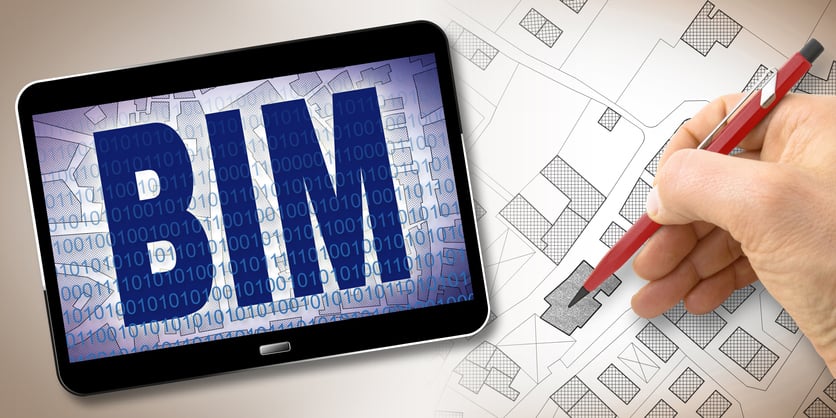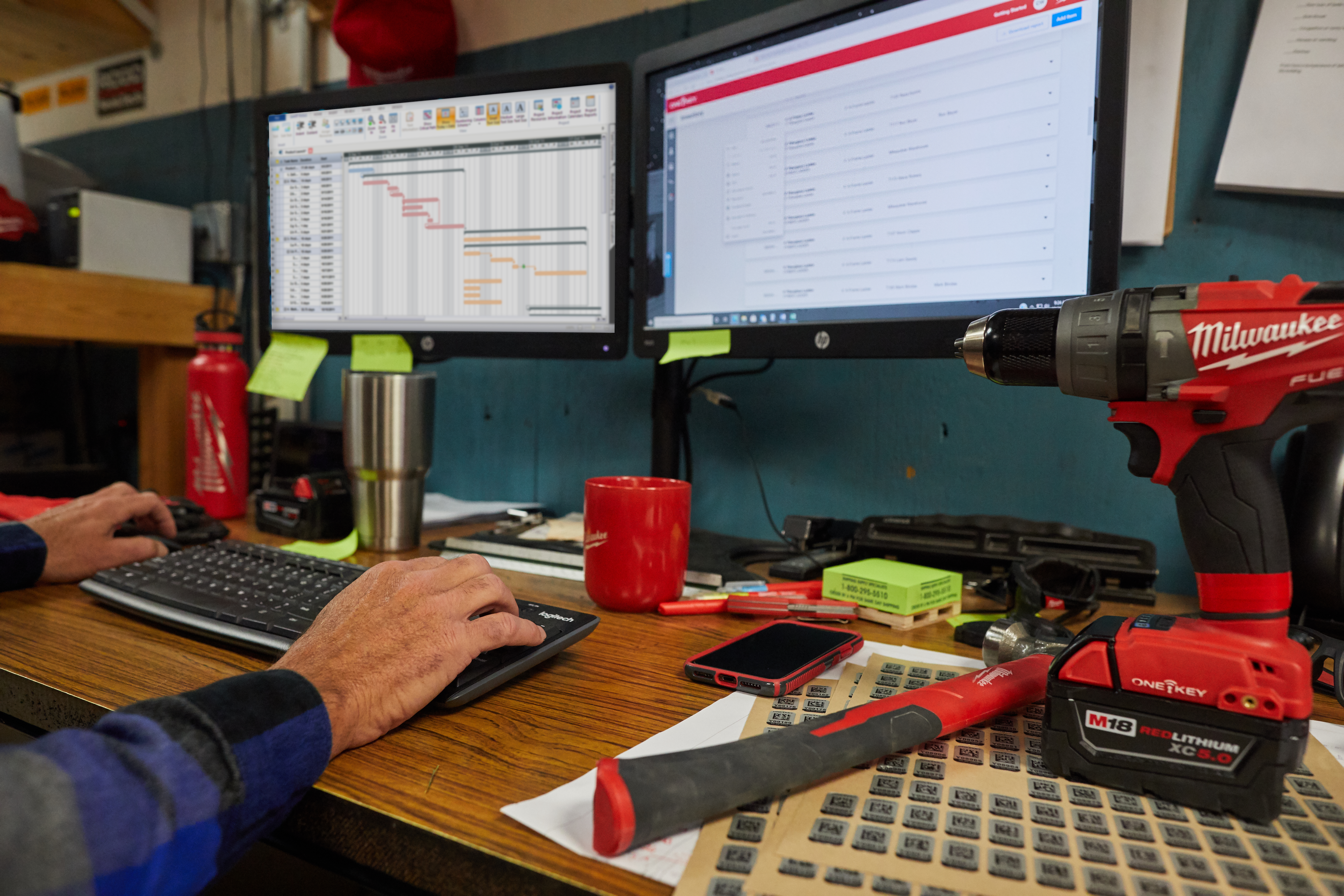
Construction, despite being historically slow to adopt technology, is plagued by big problems that have smart firms turning to construction technology to solve.
Increasingly, design teams are snipping out tedious upfront back-and-forth by adopting a streamlined inhouse design-build process, or by shopping out time-consuming in-field assembly to third-party manufacturers who specialize in prefab and modular construction methods; construction technologist professionals are turning to LiDAR and construction drones to survey land and assess risk and safety concerns; project teams are using quality assurance technology to increase collaboration with clients, outcomes, and build trust in construction projects.
Operating within a financially and talent-strapped industry, it’s more important than ever to create construction data management efficiencies through integrated construction software. While tool teams can use inventory software to help combat labor shortages, it’s imperative they are providing pathways for inventory data to become easily accessible to important stakeholders: the design team, the field project team, the construction manager back at the office. This way, otherwise siloed teams can become better enmeshed, their software tools of trade communicating with each other, helping everyone work off the same playbook and preventing outdated and unreliable information, unnecessary duplicates, and miscommunication.
Construction software integrations can help create these pathways. For example, the project data created using BIM software, an important collaborative tool of design teams, is not only relevant to clients and project management but also to the facilities management teams and asset managers supplying the tools and equipment needed in the field to perform the work that’s modeled out.
We’ll thus in this article discuss why how BIM and asset management software go hand-in-hand and how integrating these platforms may benefit the entire team.
What Does BIM Stand For?
Building information modeling, or BIM for short, is essentially smart 3D modeling, a suite of digital tools used by architects, engineers, and contractors (collectively, BIM specialists) to create multi-dimensional representations of built environments and infrastructure, and aid in interdepartmental and external (client) collaboration.

Adoption of BIM has rapidly grown over the years; in North America alone, 74% of all contractor firms had championed BIM usage in 2010, according to a report by Dodge Data & Analytics—a huge adaptation of the overall BIM user base considering it was previously used almost exclusively by architects. Coordination of projects led the purpose for using BIM in 2019, accounting for 60% of use cases, followed closely by visualization (49%), and then by project planning (46.5%).
The #1 cited barrier to BIM adoption is interoperability (e.g., the ability for software to exchange and make use of information; where, for instance, the challenge is ensuring programs used in the field are also “capable of being used or operated reciprocally” in the back office by your project manager, at the proverbial drawing board of the design team, and so forth).
That’s where software integrations we told you come in!
BIM and Project Management Software
Keeping projects on track is a growing challenge, especially when labor shortages are so common. Among the top ways of how to manage a construction project successfully are:
- Encouraging cross-functional collaboration
- Maintaining project visibility through digitized project documentation
- Adopting integrated, cloud-based solutions that support interoperability

With projects on average running 20% over time, and construction cost overruns resulting in projects running as high as 80% over budget, it’s no secret that overstretched construction companies are struggling to keep up with demand; venture capital is funding startups who seek to become the industry’s salvation. But just as fast as new construction technologies and software applications spring up, so too must be the commitments these companies have to offering integrations to support their customers’ needs; successful products will be those that value integration, not those that seek to be the be-all and end-all—the proverbial walled garden that forces customers into a restrictive, asphyxiating box.
Major software companies are helping contractors build information ecosystems
Many construction software companies in the project management space understand the benefit to creating data efficiencies where project and design teams, for example, can easily share project data, whether that’s the project team getting design specs/documentation, clients getting up to speed, or project managers/finance keeping track of work done by subcontractors as it relates to the project forecast.
- PROCORE® : Procore, a leading provider of construction software ranging from PM products to construction management-friendly BIM tools, has an app marketplace brimming with opportunities to get teams on the same page—from field productivity integrations with companies like Raken, to document management integrations with major players like Dropbox, Google Drive, and Microsoft 365, to a tool management integration with yours truly.
- AUTODESK®: AUTODESK® Construction Cloud®, a leading provider of BIM software, as represented in its full product line, offers integrations with leading project management tools, like Asana (a favorite of the One-Key marketing team!) and Basecamp. They also support “Document & File Management” with major players, like Google Drive, DropBox, and OneDrive, as well as construction-specific platforms like iConstruct.
- eSUB: A construction project management software platform built for subcontractors, eSub offers integrations through featured enterprise partners like AUTODESK®, PlanGrid (an AUTODESK® company), ViewPoint™ (a Trimble® company),
- Raken, a field ops software platform providing solutions like timecards/tracking, field reporting, and production tracking, offers integrations in project management with leading construction software providers AUTODESK® BIM 360™, PROCORE®, and Trimble®, among others; as well as pertinent document management integrations with major players Dropbox, Google Drive, and OneDrive, among others.

BIM and Asset Management Software: How Might a BIM Specialist and Asset Manager Collaborate?
To get to the meat and potatoes of this article, then. Where does BIM fit in with asset management and the tool team hitting their KPIs?

According to a research study conducted by the University of Cambridge, as BIM grows in popularity, among its chief barriers to adoption for asset managers is leveraging “newly found information to achieve whole-life cycle performance efficiencies from their physical assets.”
They add:
...data-sets generated are usually held in disparate and incoherent platforms. Such data-sets are generated with multiple enterprise software developments using an array of standards and format types. As a result, the optimum value from the information is often not fully realized.
On a macro project level, a construction asset manager should work with a BIM specialist on sharing relevant project-related data to ensure data inefficiencies are smoothed out; on a more micro, task-level, leveraging utilization data and reporting capacities of smart tools can help ensure proper installations from both a quality and liability protection standpoint.
The way One-Key integrates with Autodesk BIM 360 has these priorities in mind:
- You can import your existing Autodesk BIM 360 projects into One-Key, as well import contacts information for people working on these projects, saving your tool team from having to manually add this information or possibly creating duplicates; once everything’s imported, you can more easily keep the lines of communication open, able to, for example, contact teammates directly from the One-Key app rather than having to futz with updating address books at the contractor’s device-level.
- You can send torque reports created in One-Key to provide verification that fasteners were properly installed, increasing transparency, trust, and assuring quality to clients and inspectors alike.
The Importance of Advocating for the Construction Software Integrations Roadmap
Creating pathways through which BIM and asset management programs communicate remains, like for any other team within your org (from design to field ops) to be of chief importance; that is, removing barriers, striving for synchronization, is far more productive than creating lonelier silos.
With BIM software already such a collaborative tool in nature, it only makes sense to integrate this project quality assurance instrument with that of your tool team’s. But it also remains important to seek out new opportunities for creating interoperability across your org.
From the asset management perspective, for example, other opportunities may include building visibility through fleet management, equipment rentals, and enmeshing data created by tool room managers utilizing asset tagging best practices—whether for small/hand tools, through connected smart tools with built-in tracking functionality, or keeping track of costly equipment and fleet vehicles through integrated fleet management and field operations platforms.
With that in mind, we can assure you our integrations roadmap is only growing.